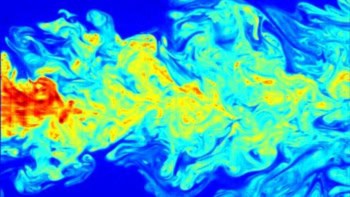A biopic of Stephen Hawking and a daily calendar of mathematical reflections, reviewed by Tushna Commissariat and Margaret Harris

Theories, trials and tribulations
Making a biographical film about someone who is still alive is tricky, especially when the subject is both famous and intensely guarded about his private life. But with The Theory of Everything – a biopic of the physicist Stephen Hawking that focuses on his relationship with his first wife Jane, based on her memoir of their 30 years together – director James Marsh seems to have pulled it off. The film starts in 1963, when Hawking (played by Eddie Redmayne) is a cosmology student at the University of Cambridge. Already determined to find a “simple, eloquent explanation” for how the universe works, the young Hawking comes across as both intelligent and awkward – a combination that intrigues and charms Jane Wilde, an arts student he meets at a party. Early in their courtship, Hawking is diagnosed with motor neurone disease and told that it will kill him in about two years. Despite this bleak prediction, the pair get engaged and initially it seems they can navigate the troubled waters of illness (and rising fame) together. As time passes and Hawking’s physical limitations become more significant, however, stresses take their toll and previously stiff upper lips begin to wobble, especially after an emergency tracheotomy causes Hawking to lose his voice. The Theory of Everything is, in the main, a love story, but it is no saccharine drama, and Marsh deliberately steers away from the maudlin. While the character of Jane Hawking (played by Felicity Jones) appears slightly naive at the start, she comes into her own as the film progresses, rationing her tears as she tries to cope with the burdens of raising a family and dealing with her husband’s increasing fame, as well as the looming shadow of his illness. The film is not without its lighter moments, though: when Hawking gets a new computerized voice, one of the first things he says with it is “Ex-ter-minate!” While strong on Hawking’s humanity (and humour), The Theory of Everything has less to say about the physics research that made him famous. A few scenes do show him working on his theories and presenting them to ever-increasing audiences of friends and colleagues, but these merely skim the surface. While it seems odd to give so little time to the source of Hawking’s celebrity, Marsh was clearly aiming to depict Hawking the man, rather than Hawking the brilliant scientist. In this, he succeeds, with a subtle, restrained portrait of the lives of some very clever people.
- 2014 Universal Pictures/Focus Features, a Working Title production
A daily dose of mathematics
In a religious context, the term “devotional” refers to a book containing short prayers or other spiritual reflections for each day of the year. In The Mathematics Devotional, author Clifford Pickover strips out the religious element, replacing holy writ with quotations about mathematics and saintly iconography with computer-generated artwork, but otherwise leaves the devotional format intact. What you will find inside the crisp covers of his book are a short introductory essay, an even shorter set of micro-biographies of mathematicians, 366 quotations about the wonders (or frustrations) of mathematics and 366 pretty pictures to accompany them. And that’s it. Although sparse in its form and content, The Mathematics Devotional is (like some of its religious counterparts) a beautiful object, and the daily quotations are well selected from a diverse range of sources, including novelists, philosophers, physicists and mathematicians. On 20 January there’s even a snippet from Physics World’s own columnist, Robert P Crease, on the subject of great equations. Disappointingly, though, the illustrations are more or less information-free. Drawn from an opaque list of sources with only the briefest attribution, it is generally quite difficult to tell what (if any) mathematics they contain, and many bear little relation to the quotations that appear below them. Given that several robotic Twitter accounts provide their followers with much the same sort of thing, and for infinitely less money, it is a little hard to see where the audience for a book like this will come from – unless it’s made up of people who would otherwise struggle to think of gift ideas for mathematician in-laws or distant relatives.
- 2014 Sterling £14.99/$19.95hb 392pp



